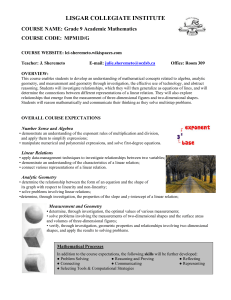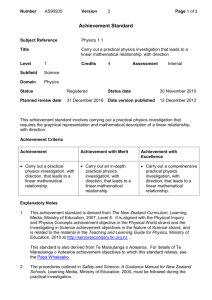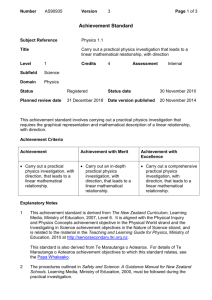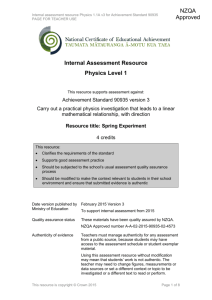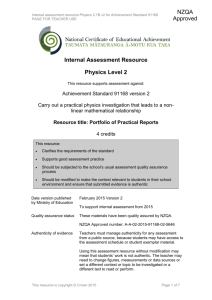Thinking with Mathematical Models: Linear and Inverse Variation
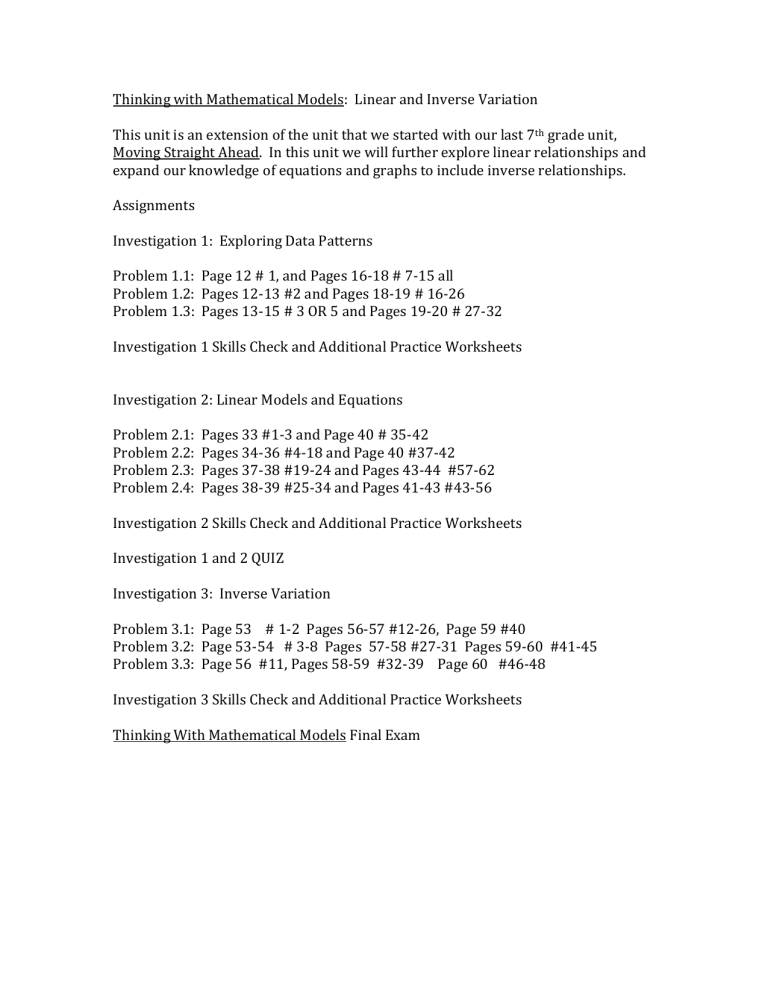
Thinking with Mathematical Models: Linear and Inverse Variation
This unit is an extension of the unit that we started with our last 7 th grade unit,
Moving Straight Ahead. In this unit we will further explore linear relationships and expand our knowledge of equations and graphs to include inverse relationships.
Assignments
Investigation 1: Exploring Data Patterns
Problem 1.1: Page 12 # 1, and Pages 16-18 # 7-15 all
Problem 1.2: Pages 12-13 #2 and Pages 18-19 # 16-26
Problem 1.3: Pages 13-15 # 3 OR 5 and Pages 19-20 # 27-32
Investigation 1 Skills Check and Additional Practice Worksheets
Investigation 2: Linear Models and Equations
Problem 2.1: Pages 33 #1-3 and Page 40 # 35-42
Problem 2.2: Pages 34-36 #4-18 and Page 40 #37-42
Problem 2.3: Pages 37-38 #19-24 and Pages 43-44 #57-62
Problem 2.4: Pages 38-39 #25-34 and Pages 41-43 #43-56
Investigation 2 Skills Check and Additional Practice Worksheets
Investigation 1 and 2 QUIZ
Investigation 3: Inverse Variation
Problem 3.1: Page 53 # 1-2 Pages 56-57 #12-26, Page 59 #40
Problem 3.2: Page 53-54 # 3-8 Pages 57-58 #27-31 Pages 59-60 #41-45
Problem 3.3: Page 56 #11, Pages 58-59 #32-39 Page 60 #46-48
Investigation 3 Skills Check and Additional Practice Worksheets
Thinking With Mathematical Models Final Exam
Thinking With Mathematical Models Important Concepts
Vocabulary terms from previous units that are expanded upon in this book:
Area-
Average Speed-
Coefficient-
Constant Term-
Coordinate Graph-
Coordinate Pair-
Dependent Variable-
Fact Families-
Independent Variable-
*Inequality-
Length-
Linear Equation-
Linear Relationship-
Patterns of Change-
Point of Intersection-
Profit-
Proportion-
Rate-
Rate of change-
Ratio-
Rise-
Run-
Scale-
Scatter Plot-
Slope-
*Surface Area-
Table-
Variable-
Width- y-intercept
*These concepts will be reviewed during this unit. It is assumed that you understand each of the other terms in mathematical context. Please review the terms that you are not comfortable with in order to become confident in their usage in math class.
Vocabulary terms that are introduced in this book:
Additive Inverse-Two numbers that satisfy the equation a + b = 0.
Examples: -4 + 4 = 0 ½ + - ½ = 0
(Also known as opposites.)
Breaking Weight-the amount of weight that is necessary to cause a structure to break.
Demand (Supply and Demand)-The amount of product that is required (supply) in order to fulfill a need (demand).
Direct Variation-A relationship between variables that causes one variable to
increase as the other variable increases.
Example: As time walking increases, distance covered increases.
Equation: y = k x (This is kind of like the y = m x from y = m x + b in our last unit)
Inverse Variation- A relationship between variables that causes one variable to
decrease as the other variable increases.
Example: The time it takes you to get somewhere decreases as your speed increases.
Equation: x y = k OR y = k/x OR x = k/y where k is a constant.
Linear Model- A situation that exist in the “real world” that is an example of a linear relationship.
Example: The relationship between the number of beams needed to make a staircase frame and the number of stairs.
Mathematical Model- An equation or a graph that approximates the relationship in a linear model (real world situation).
Example: The relationship between your speed and travelling 100 miles can be shown by the mathematical model: speed • time = 100 OR time = 100/speed OR
Speed = 100/ time
Multiplicative Inverse-Two numbers a and b, that meet the condition of a • b=1.
(Also known as reciprocals) 3 • 1/3 = 1
Supply (Supply and Demand)- The amount of product that is required (supply) in order to fulfill a need (demand).
